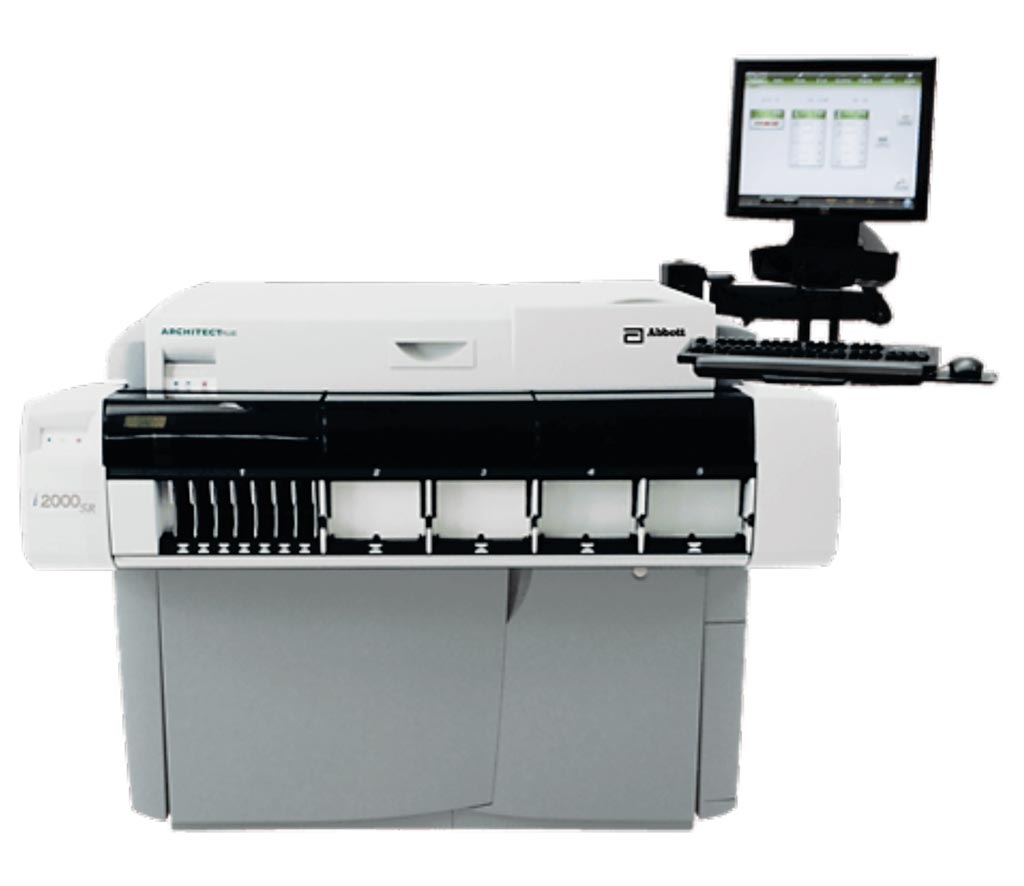Fifth-Generation Cardiac Troponin Assays Compared
By LabMedica International staff writers
Posted on 21 Aug 2018
Cardiac troponin I (cTnI) and cardiac troponin T (cTnT) are highly specific biomarkers of myocardial injury. The 99th percentile upper reference limit (URL) of a normal reference population is the recommended threshold which defines an increased cTnI or cTnT plasma concentration indicative for myocardial injury.Posted on 21 Aug 2018
In Europe, physicians have been using the so-called high-sensitivity cTnI (hs-cTnI) and high-sensitivity cTnT (hs-cTnT) assays for several years in clinical routine. These high-sensitivity assays, which are more analytically sensitive than former assays for the measurement of cardiac troponins, are also termed 5th generation assays.

Image: The ARCHITECT i2000SR immunoassay analyzer (Photo courtesy Abbott Diagnostics).
Medical laboratory scientists at the Konventhospital Barmherzige Brueder Linz (Linz, Austria) studied 3,588 consecutive patients presenting to an emergency department. In a retrospective study they measured hs-cTnT plasma concentrations with the 5th generation “Troponin T hs” assay on a modular platform in clinical routine since January 2010.
Due to a changeover of their analytical systems, they switched to the 5th generation “STAT High Sensitive Troponin-I" assay by using an ARCH-ITECT i2000SR analyzer for clinical routine use in our hospitals since February 2013. The team assessed the capabilities of hs-cTnI and hs-cTnT for the prediction of 3.7 year all-cause mortality; discordant diagnoses of myocardial injury by hs-cTnI and hs-cTnT according to the European gender-neutral 99th percentile upper reference limits (i.e., 26 ng/L and 14 ng/L, respectively); and (3) analyte kinetics in patient with serial troponin measurements.
The scientists reported that with respect to prognosis of all-cause mortality, the AUC of hs-cTnI was 0.81 (95% CI, 0.80–0.82), and the AUC of hs-cTnT was 0.85 (95% CI, 0.84–0.86). With respect to discordant diagnoses, 21% of the 3,588 patients were classified as having myocardial injury by hs-cTnT but not by hs-cTnI, and less than 1% were classified as having myocardial injury by hs-cTnI but not by hs-cTnT. In the patients with serial blood sampling, the median delta values were 6.3 ng/L and 25% for hs-cTnI, and 4.2 ng/L and 16% for hs-cTnT.
The authors concluded that they had found different characteristics of the Abbott hs-cTnI and the Roche hs-cTnT assays, especially when using the European gender-neutral 99th percentile upper reference limits. Clinically, these different characteristics are related to discordant results in the diagnosis and prognosis of patients presenting to an emergency department. The study has been available online since June 27, 2018, in the journal Clinica Chimica Acta.
Related Links:
Konventhospital Barmherzige Brueder Linz














